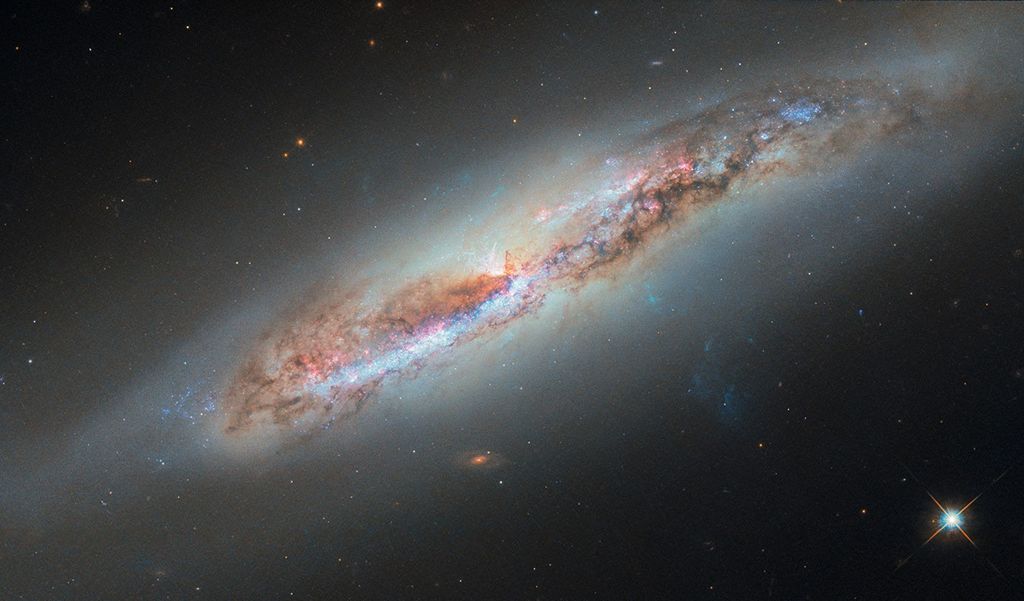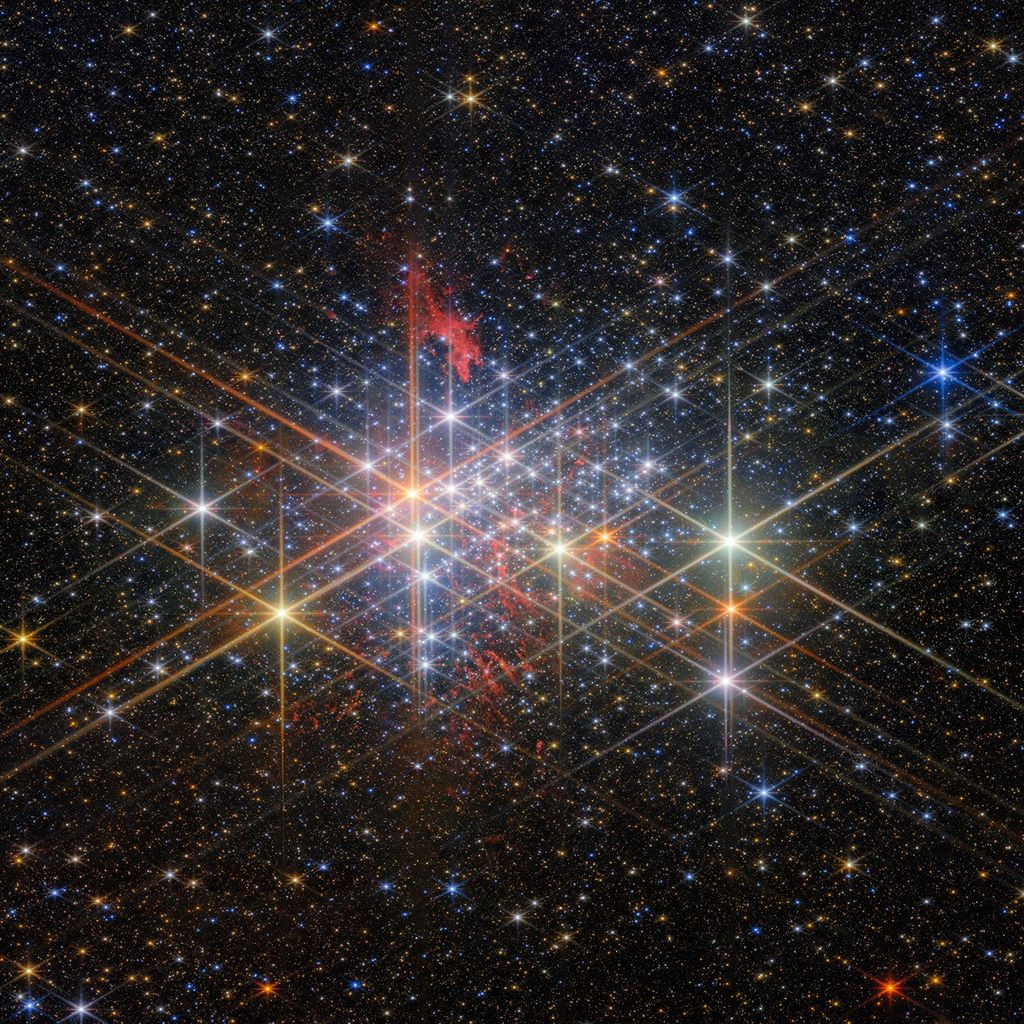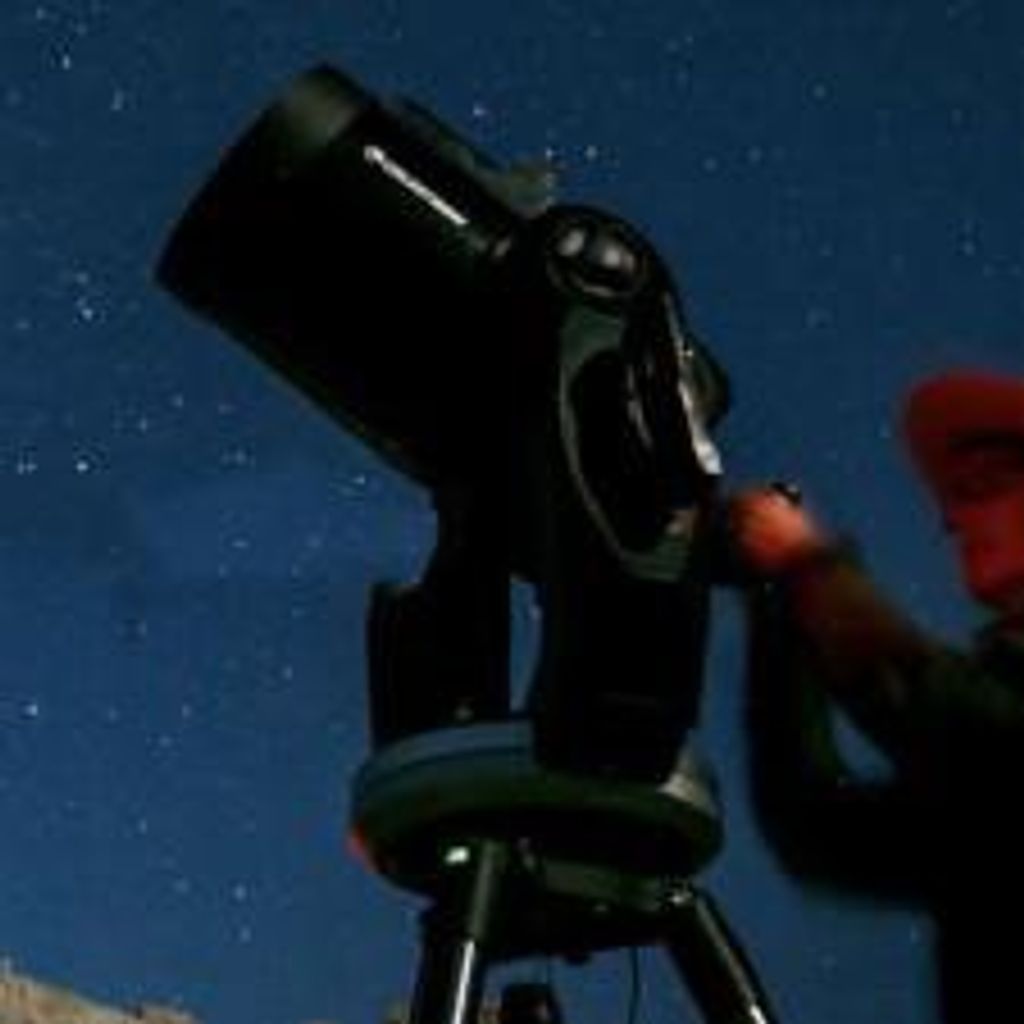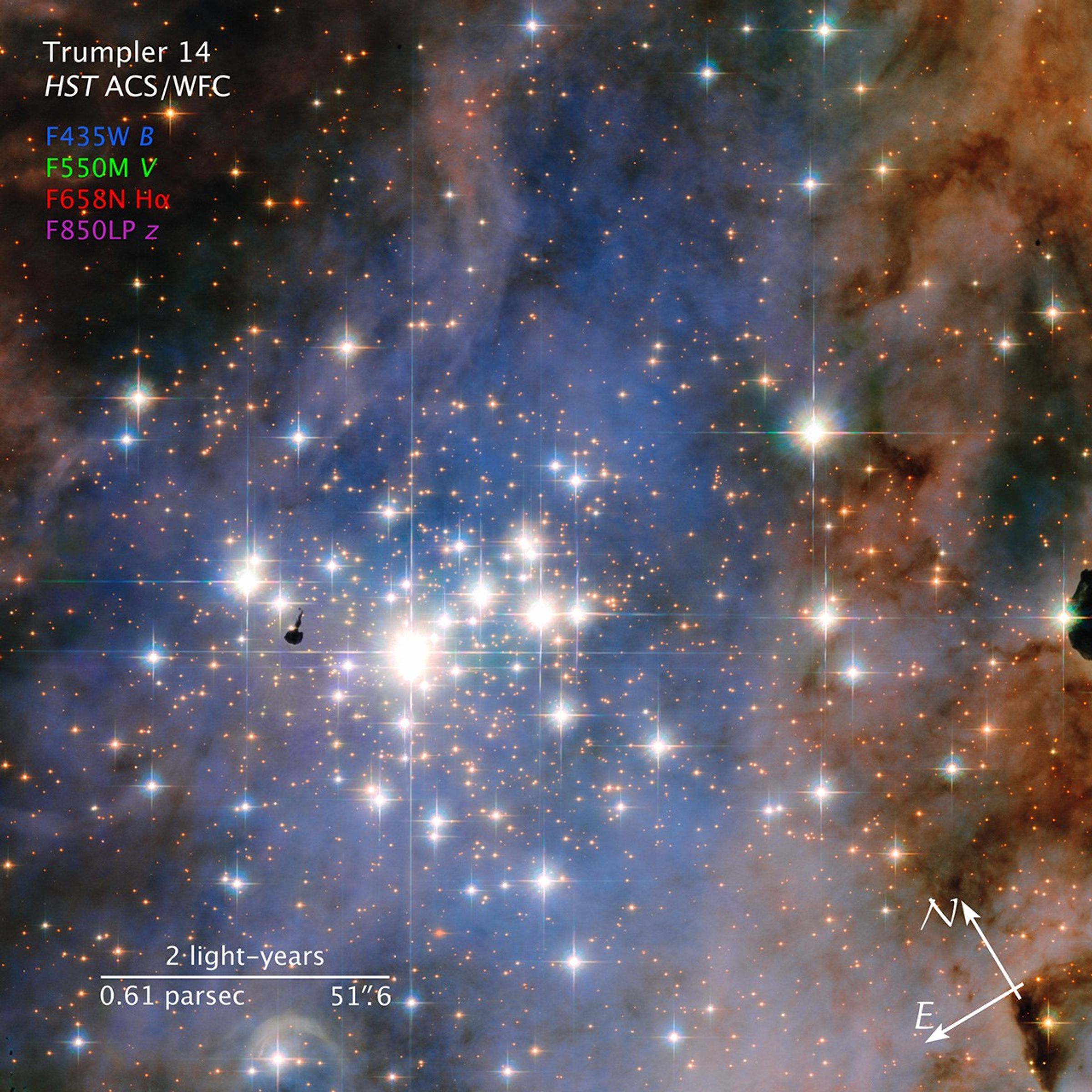1 min read
Trumpler 14

Resembling an opulent diamond tapestry, this image from NASA's Hubble Space Telescope shows a glittering star cluster that contains a collection of some of the brightest stars seen in our Milky Way galaxy. Called Trumpler 14, it is located 8,000 light-years away in the Carina Nebula, a huge star-formation region. Because the cluster is only 500,000 years old, it has one of the highest concentrations of massive, luminous stars in the entire Milky Way. (The small, dark knot left of center is a nodule of gas laced with dust, and seen in silhouette.)
Diamonds are forever, but these blue-white stars are not. They are burning their hydrogen fuel so ferociously they will explode as supernovae in just a few million years. The combination of outflowing stellar "winds" and, ultimately, supernova blast waves will carve out cavities in nearby clouds of gas and dust. These fireworks will kick-start the beginning of a new generation of stars in an ongoing cycle of star birth and death.
This composite image of Trumpler 14 was made with data taken in 2005-2006 with Hubble's Advanced Camera for Surveys. Blue, visible, and infrared broadband filters combine with filters that isolate hydrogen and nitrogen emission from the glowing gas surrounding the open cluster.
About the Object
- R.A. PositionR.A. PositionRight ascension – analogous to longitude – is one component of an object's position.10h 43m 55.92s
- Dec. PositionDec. PositionDeclination – analogous to latitude – is one component of an object's position.-59° 33' 0.0"
- ConstellationConstellationOne of 88 recognized regions of the celestial sphere in which the object appears.Carina
- DistanceDistanceThe physical distance from Earth to the astronomical object. Distances within our solar system are usually measured in Astronomical Units (AU). Distances between stars are usually measured in light-years. Interstellar distances can also be measured in parsecs.8,000 light-years (2,450 parsecs)
About the Data
- Data DescriptionData DescriptionProposal: A description of the observations, their scientific justification, and the links to the data available in the science archive.
Science Team: The astronomers who planned the observations and analyzed the data. "PI" refers to the Principal Investigator.The HST data were taken from proposals 10241: N. Smith (University of Arizona), J. Bally (University of Colorado, Boulder), N. Walborn (STScI), and J. Morse (Rensselaer Polytechnic Institute); and 10602: J. Maíz Apellániz (Institute of Astrophysics of Andalusia, Spain), N. Walborn and E. Nelan (STScI), N. Morrell (Carnegie Institution of Washington), and V. Niemela (Universidad Nacional de La Plata). - InstrumentInstrumentThe science instrument used to produce the data.HST>ACS/WFC
- Exposure DatesExposure DatesThe date(s) that the telescope made its observations and the total exposure time.July 17, 2005, and July 29, 2006
- FiltersFiltersThe camera filters that were used in the science observations.F435W (B), F550M (V), F658N (H-alpha+[N II]), and F850LP (SDSS z)
- Object NameObject NameA name or catalog number that astronomers use to identify an astronomical object.Trumpler 14
- Object DescriptionObject DescriptionThe type of astronomical object.Open Cluster in the Carina Nebula
- Release DateJanuary 21, 2016
- Science ReleaseHubble Unveils a Tapestry of Dazzling Diamond-Like Stars
- Credit

This image is a composite of separate exposures acquired by the ACS/WFC instrument. Several filters were used to sample various wavelengths. The color results from assigning different hues (colors) to each monochromatic (grayscale) image associated with an individual filter. In this case, the assigned colors are: Blue: F435W (B) Green: F550M (V) Red: F658N (H-alpha+[N II]) Purple: F850LP (SDSS z)

Share
Details
Claire Andreoli
NASA’s Goddard Space Flight Center
Greenbelt, Maryland
claire.andreoli@nasa.gov































